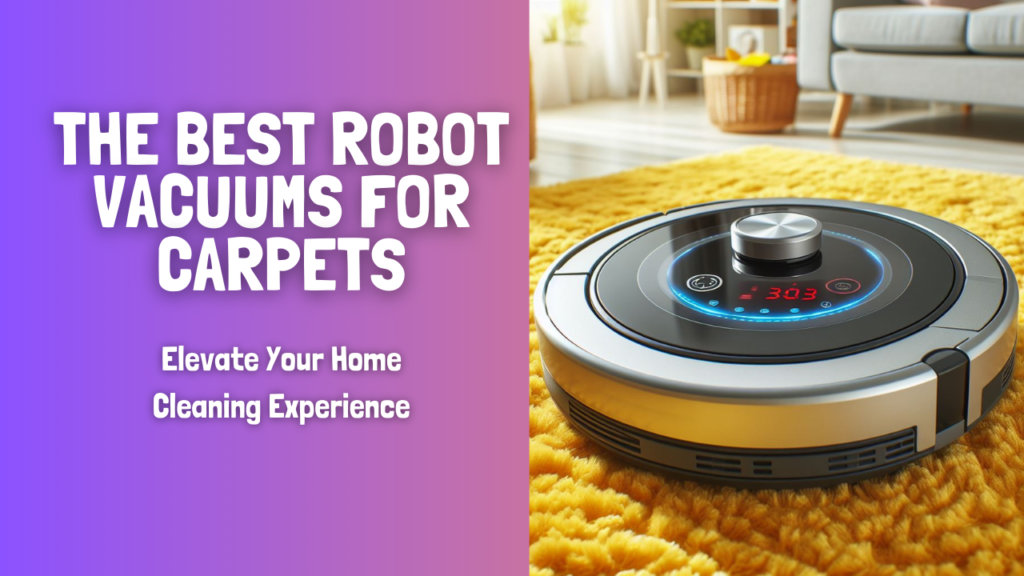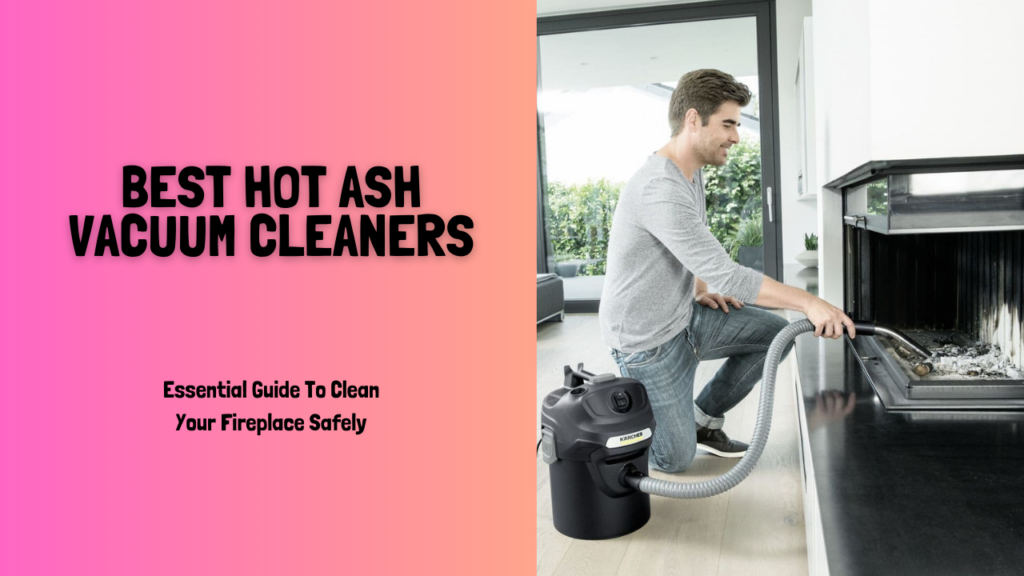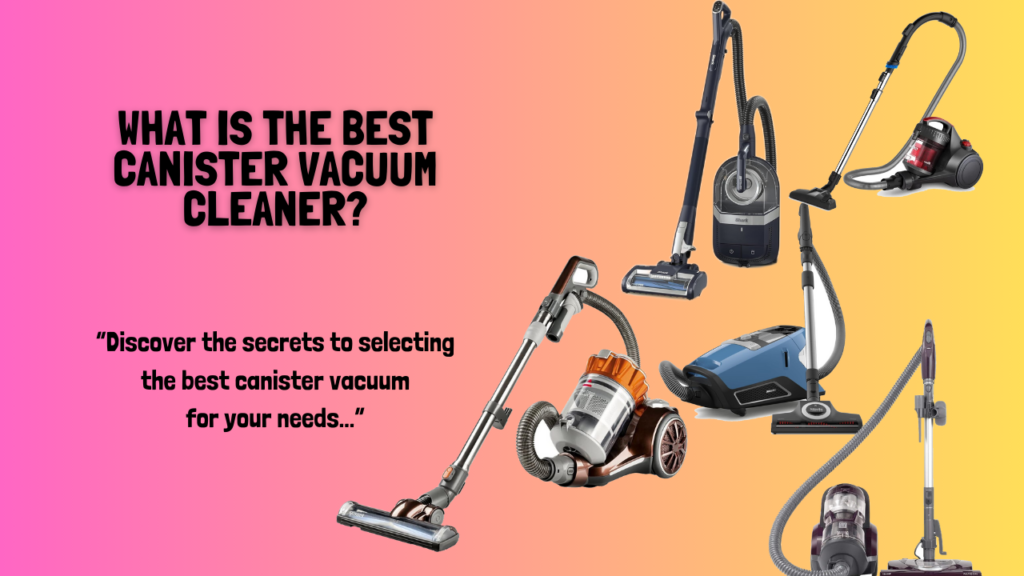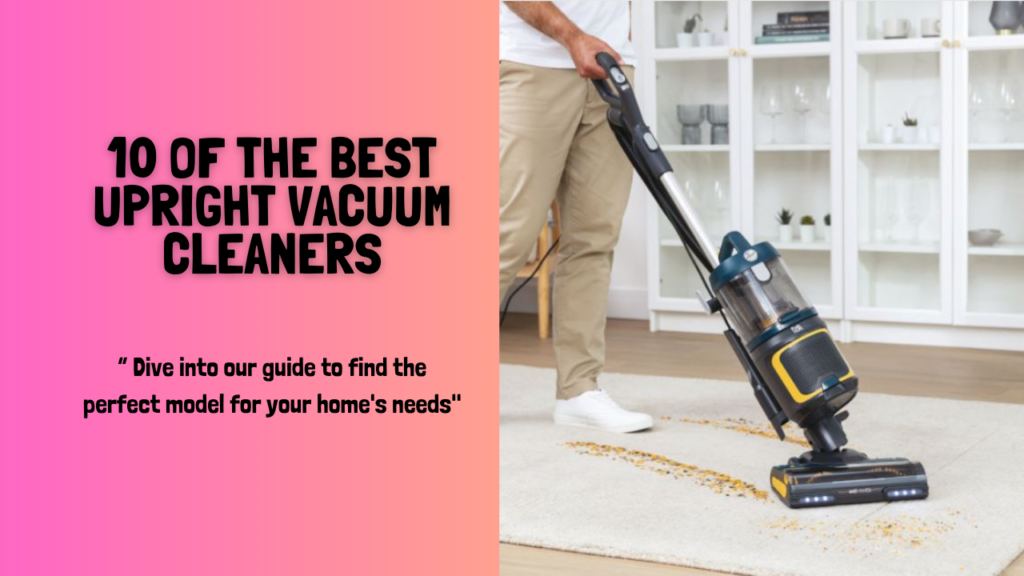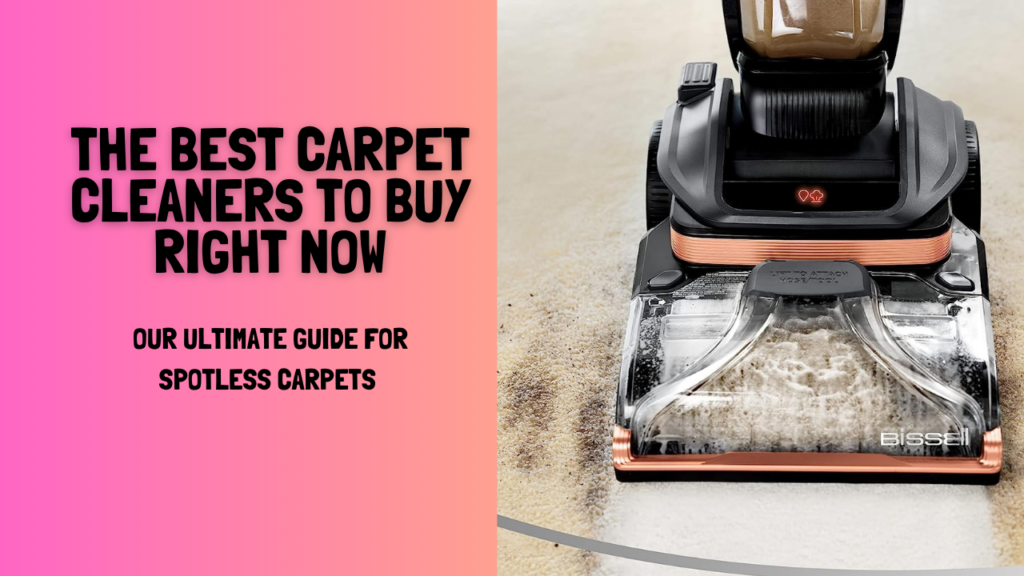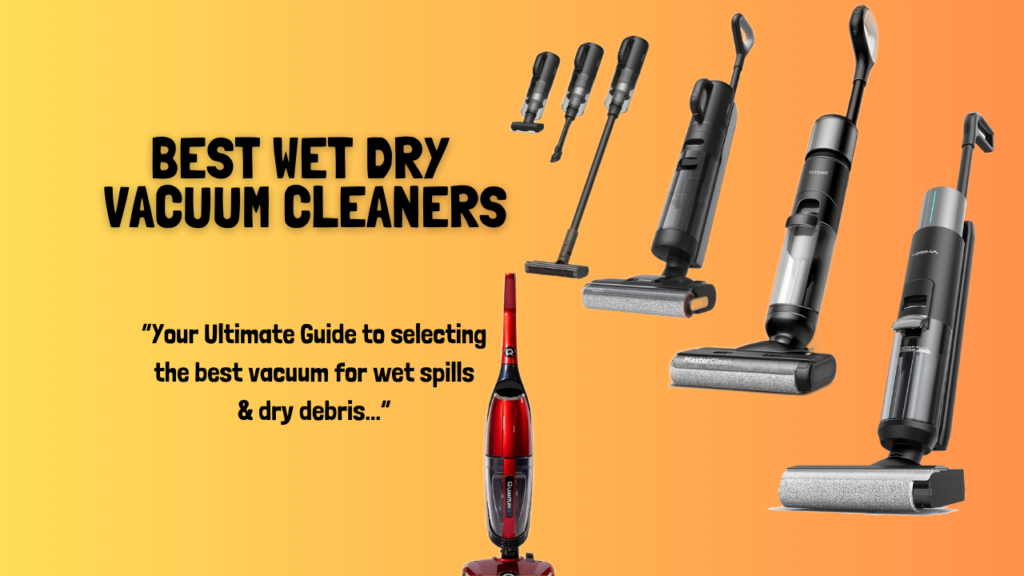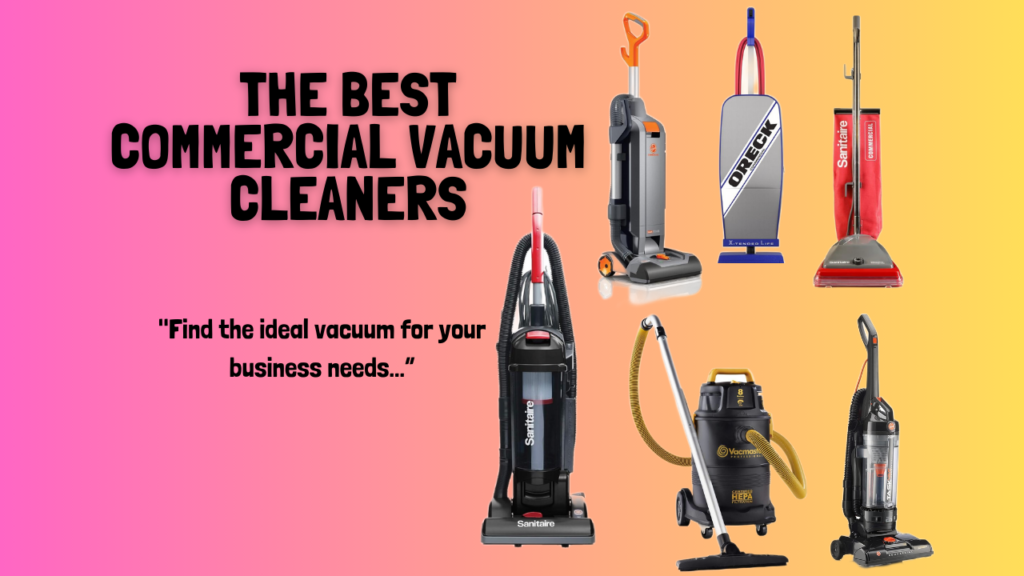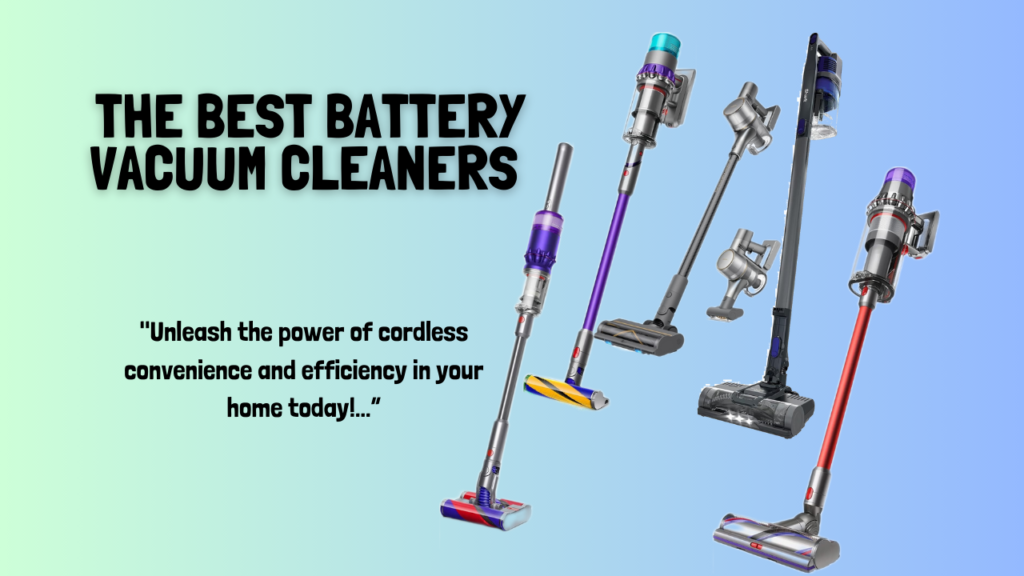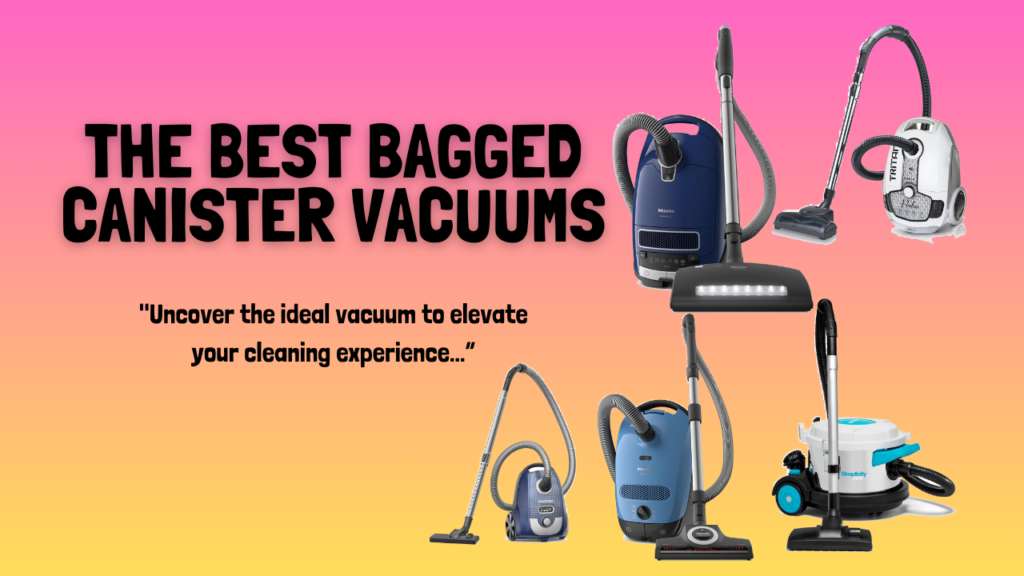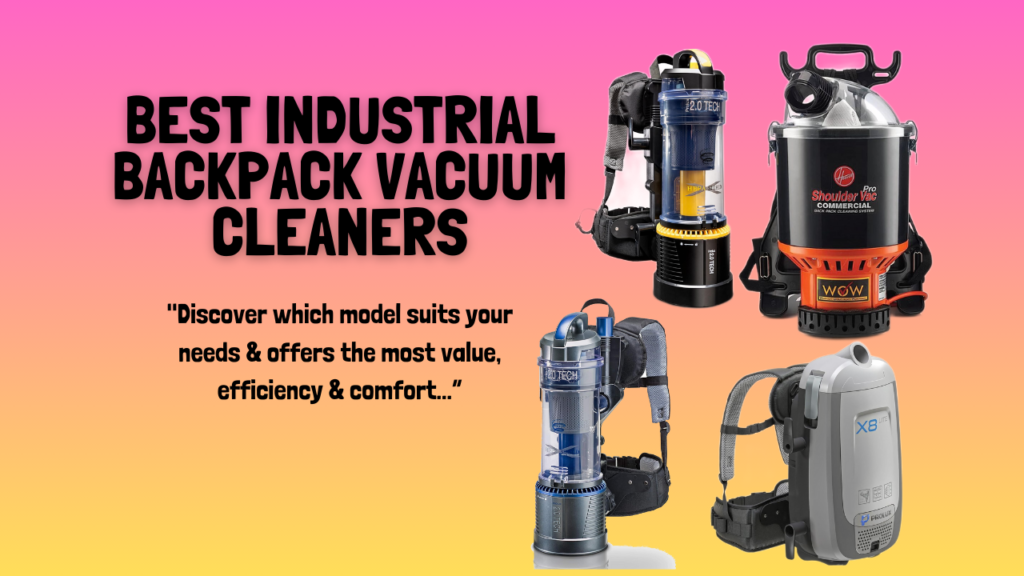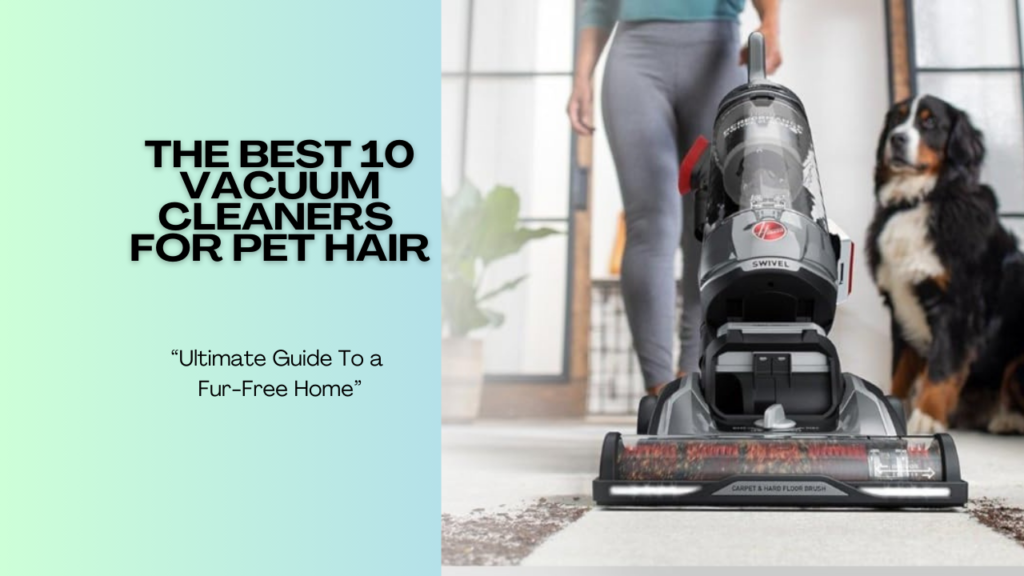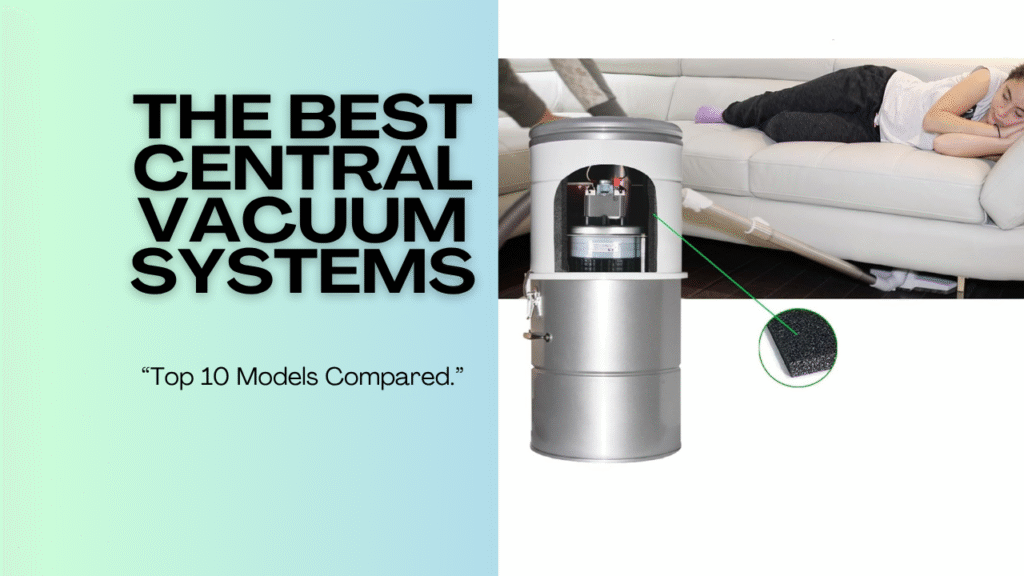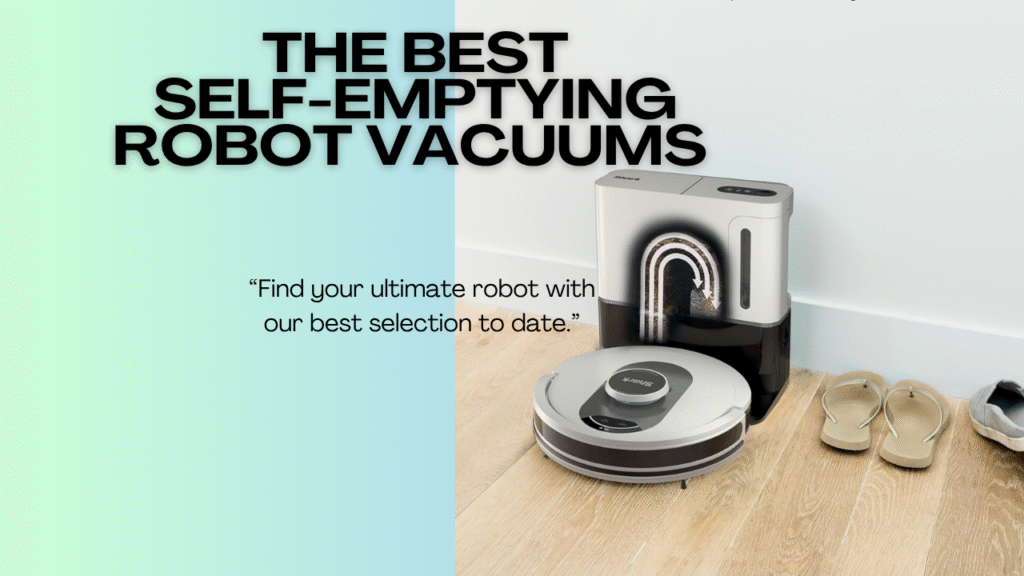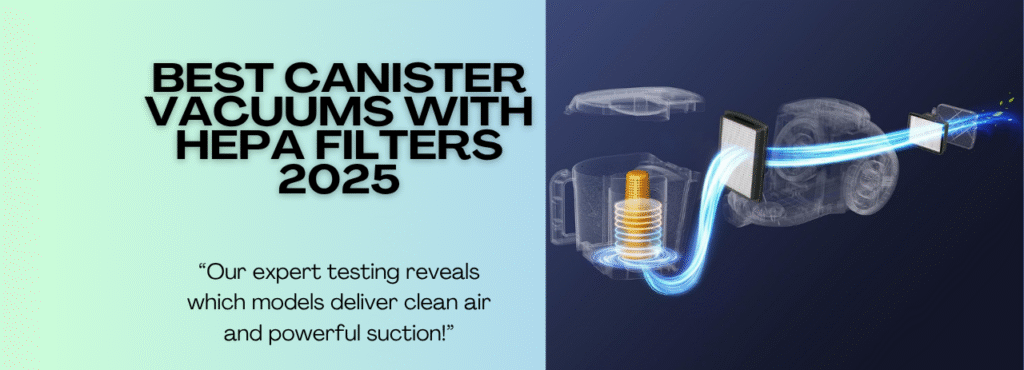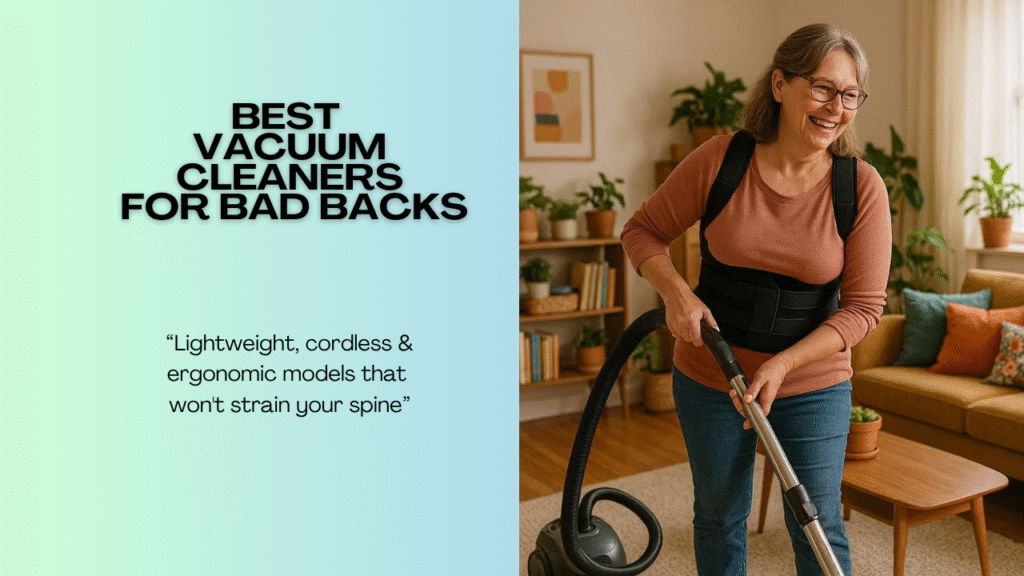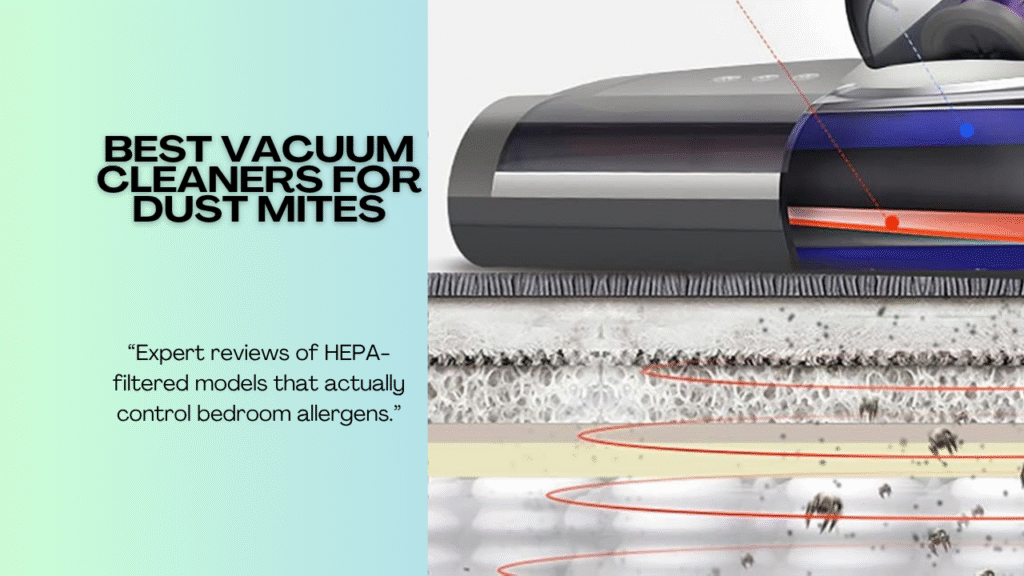Table of Contents
I’ll never forget the first time I set loose a basic robot vacuum in my large home. It cleaned the entryway beautifully, then died halfway across the living room. The battery light blinked sadly as it gave up, leaving me with a partially cleaned house and serious buyer’s remorse. If you’re wondering how to choose a robot vacuum for large homes, you’re already ahead of where I was. Large homes present unique challenges that standard robot vacuums simply can’t handle. You need specific features that most budget models lack entirely.
Here’s the truth: not all robot vacuums are created equal. What works brilliantly in a small apartment becomes completely inadequate in a sprawling multi-level home. Battery life matters more. Navigation technology becomes crucial. Features you’d never consider suddenly become deal-breakers.
Why Large Homes Are Different
Large homes demand more from cleaning technology. You’re not just scaling up the square footage. You’re introducing complexity that fundamentally changes how a robot vacuum must operate.
Multi-room layouts require intelligent navigation systems. Long hallways test battery capacity limits. Multiple floor types challenge transition capabilities. Furniture arrangements create obstacle courses that basic sensors can’t handle.
Traditional vacuums give you direct control over cleaning patterns. You decide which rooms get attention and when. Robot vacuums for large homes need to replicate this decision-making autonomously.
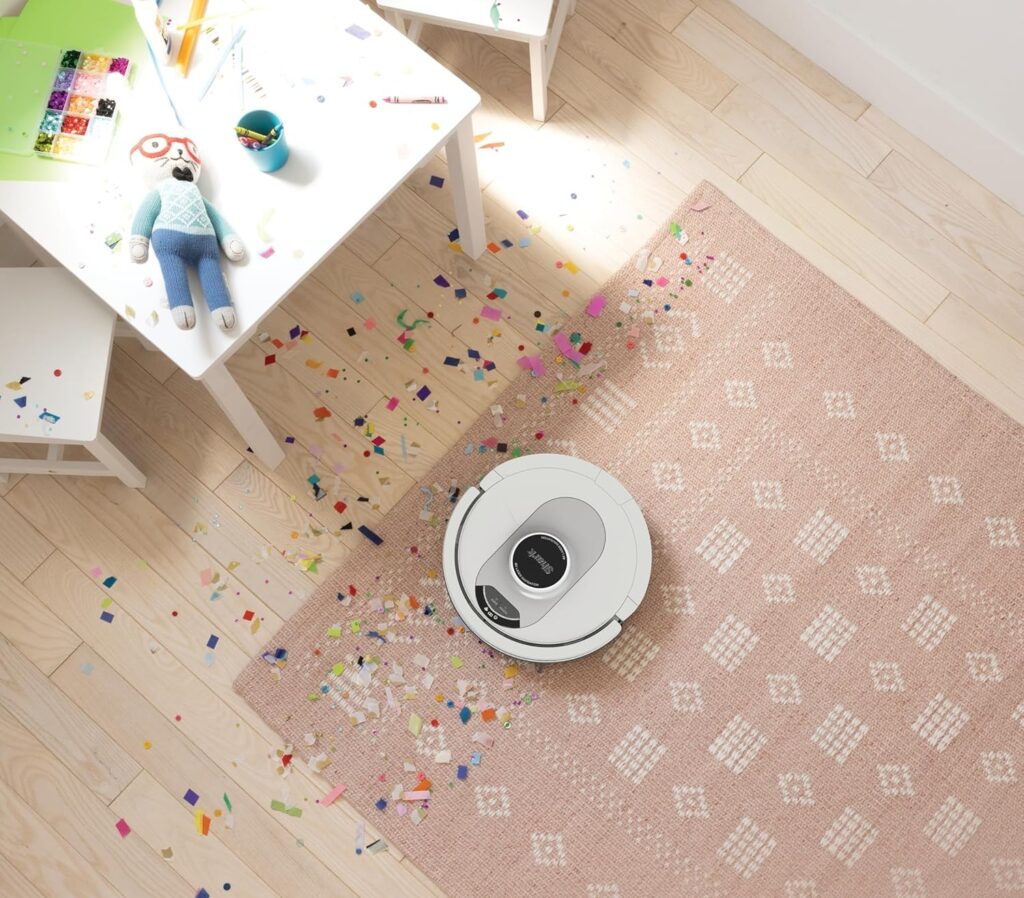
The Technology Gap
Robot vacuum technology has evolved dramatically over the past five years. Early models wandered randomly, hoping to eventually cover your floors. Modern premium units map your home with laser precision and clean systematically.
This technological leap matters enormously for large homeowners. Random navigation might eventually clean a small apartment. It will never adequately cover a 3,000 square foot house before the battery dies.
According to research from Consumer Reports, robot vacuums with advanced mapping complete cleaning tasks 40% faster than random-pattern models. In large homes, this efficiency difference becomes the determining factor between success and frustration.
Read Our In-Depth Reviews of Specific Models in Our Complete Guide to the Best Robot Vacuums
What You’ll Learn
This guide walks you through every consideration specific to large-home robot vacuum selection. I’ll explain which features truly matter and which are just marketing hype. You’ll understand battery requirements, navigation technologies, and smart features that actually provide value.
I’ll share real-world performance expectations based on different home sizes. You’ll learn how to calculate your specific needs and match them to vacuum capabilities. By the end, you’ll confidently choose a robot vacuum that actually works for your space.
We’ll also tackle the budget question honestly. Large-home capable robot vacuums cost more than basic models. I’ll explain why, where you can compromise, and where you absolutely cannot.
Let’s dive into how to choose a robot vacuum for large homes that will actually keep your floors clean without constant intervention.
1. Why Large Homes Need Special Robot Vacuum Considerations
Coverage Area Challenges
Square footage directly impacts cleaning success. A robot vacuum that handles 1,000 square feet easily might struggle beyond 1,500. Understanding this limitation prevents disappointment.
Most entry-level robot vacuums offer 90-120 minutes of runtime. This sounds substantial until you calculate actual coverage. These models typically clean 1,500-2,000 square feet per charge in ideal conditions.
Large homes often exceed 2,500 square feet. Add furniture, multiple rooms, and navigation complexity, and you need significantly more runtime. Premium models offering 150-200 minutes become necessary rather than luxurious.
Multi-Room Navigation
Single rooms are simple. Multiple connected rooms create navigation challenges. The robot must track where it’s been and systematically cover uncleaned areas.
Basic models lose track in complex layouts. They re-clean the same spaces repeatedly while missing others entirely. This inefficiency wastes battery and leaves rooms dirty.
Advanced mapping technology solves this problem. The vacuum creates a floor plan during initial runs. Subsequent cleanings follow systematic patterns that ensure complete coverage.

Recharging and Resuming Cleaning
Battery capacity alone doesn’t determine large-home suitability. Recharge-and-resume functionality matters equally. Without this feature, partial cleaning becomes your permanent reality.
Premium robot vacuums return to their charging base when the battery runs low. After recharging, they resume exactly where they stopped. This allows cleaning sessions that exceed single-charge capacity.
Budget models without this feature simply stop when batteries die. You must manually restart them, and they begin cleaning from the beginning. This makes completing large homes impossible.
The Wireless Home technology blog emphasises that recharge-and-resume capability is non-negotiable for homes exceeding 2,000 square feet.
2. Essential Features for Large-Home Robot Vacuums
Battery Life and Runtime
Battery specifications determine cleaning capability more than any other single factor. For large homes, you need a minimum of 150 minutes of runtime in standard mode.
Pay attention to how manufacturers specify runtime. “Up to 180 minutes” often means eco mode on bare floors. Max suction on carpet might deliver only 90 minutes.
Calculate your needs based on square footage. Generally, expect coverage of 1,000-1,200 square feet per hour in real-world conditions. A 3,000 square foot home requires 2.5-3 hours of runtime minimum.
Read Our In-Depth Reviews of Specific Models in Our Complete Guide to the Best Robot Vacuums
Smart Mapping and Room Recognition
Intelligent mapping transforms robot vacuums from random cleaners into efficient systems. The vacuum creates detailed floor plans showing room boundaries and furniture locations.
Room recognition allows you to name spaces and send the robot to specific areas. “Clean the kitchen” becomes a simple voice command. This targeted cleaning proves invaluable for quick daily maintenance.
Advanced systems learn room dimensions and optimise cleaning patterns. They calculate the most efficient path rather than wandering aimlessly. This systematic approach reduces cleaning time significantly.
Multi-Floor Mapping Capability
Multi-level homes require storing maps for different floors. Premium models save 3-5 floor plans and automatically recognise which level they’re on.
Without this feature, you manually restart mapping on each floor. The vacuum treats every level as unfamiliar territory. This wastes time and battery on repeated learning.
Multi-floor memory also preserves room labels and no-go zones per level. Your upstairs “bedroom” settings don’t interfere with downstairs “living room” configurations.
Recharge and Resume Functionality
I mentioned this earlier because it’s absolutely critical. Recharge-and-resume allows the vacuum to complete cleaning sessions exceeding battery capacity.
The vacuum monitors battery levels during cleaning. When power drops below a threshold, it returns to dock automatically. After partial recharging, it resumes cleaning from the exact stopping point.
This feature turns a 150-minute vacuum into an unlimited-capacity cleaner. Your 4,000 square foot home gets completely cleaned even if it requires multiple recharge cycles.
Large Dustbin Capacity
Dustbin size directly impacts maintenance frequency. Large homes generate more debris, requiring frequent emptying without adequate capacity.
Look for a minimum 0.5-litre dustbin capacity for large homes. Smaller bins require emptying mid-cleaning, interrupting the automated convenience you purchased the vacuum to provide.
Self-emptying base stations solve this problem entirely. The vacuum returns to the dock after each cleaning and transfers debris to a larger container. You empty this base every 30-60 days instead of daily.

3. Navigation Technology Explained
LiDAR vs Camera Navigation
Navigation technology determines how effectively the robot maps and cleans your home. Two primary systems dominate the market: LiDAR and camera-based navigation.
LiDAR uses laser sensors to measure distances and create detailed floor maps. It works perfectly in darkness and creates highly accurate layouts. Premium models favour this technology for reliability.
Camera-based systems use visual landmarks for navigation. They cost less but require adequate lighting. Some struggle in rooms with minimal distinctive features.
For large homes, LiDAR provides superior reliability. The consistent accuracy matters when mapping complex multi-room layouts. Camera systems work adequately but with occasional mapping errors.
Random Pattern vs Systematic Cleaning
Navigation patterns dramatically impact cleaning efficiency. Understanding these differences helps you choose appropriate technology for your space.
Random-pattern robots move in seemingly chaotic directions until they’ve covered most floor space. This approach works acceptably in small, simple rooms. It fails spectacularly in large, complex homes.
Systematic cleaning follows organised paths, typically parallel lines ensuring complete coverage. The robot knows exactly where it’s cleaned and where it remains uncovered. This efficiency matters enormously in large spaces.
According to CNET’s robotic vacuum testing, systematic cleaners complete large homes 50-60% faster than random-pattern models.
Virtual Walls and No-Go Zones
Large homes often contain areas where you don’t want the robot venturing. Pet feeding stations, home offices, or rooms with delicate items need protection.
Virtual walls and no-go zones create digital boundaries. You draw these restrictions on the floor map through the smartphone app. The robot respects these boundaries without physical barriers.
Advanced systems allow different restrictions per cleaning schedule. “Avoid the office during work hours” or “skip the dining room during dinner” become automated rules.
Read Our In-Depth Reviews of Specific Models in Our Complete Guide to the Best Robot Vacuums
Multi-Floor Memory
Multi-floor capability stores separate maps for different levels. The vacuum remembers each floor’s unique layout, room names, and restriction zones.
Smart models automatically recognise which floor they’re on. They load the appropriate map and restrictions without user intervention. This seamless operation maintains convenience across your entire home.
Without multi-floor memory, you manually manage separate maps. This adds friction to using your robot vacuum on different levels.
4. Smart Home Integration
Wi-Fi Connectivity Requirements
Modern robot vacuums require reliable Wi-Fi connections for full functionality. Smart features depend on cloud connectivity and remote access capabilities.
Your Wi-Fi network must reach all areas where the robot cleans. Dead zones prevent status updates and remote control. Large homes might need mesh Wi-Fi systems for adequate coverage.
Most robot vacuums connect to 2.4GHz networks only. Ensure your router broadcasts this frequency if you run a 5GHz-only configuration.
App Control and Scheduling
Smartphone apps transform robot vacuums into truly smart cleaning systems. You control all features, view cleaning history, and customise operation through simple interfaces.
Scheduling allows automated daily cleaning while you’re away. Set the vacuum to clean Monday through Friday at 10 AM. Return home to freshly cleaned floors without lifting a finger.
App-based room selection enables targeted cleaning commands. “Clean the kitchen and dining room” sends the robot to specific spaces. This flexibility suits the varied cleaning needs of large homes.
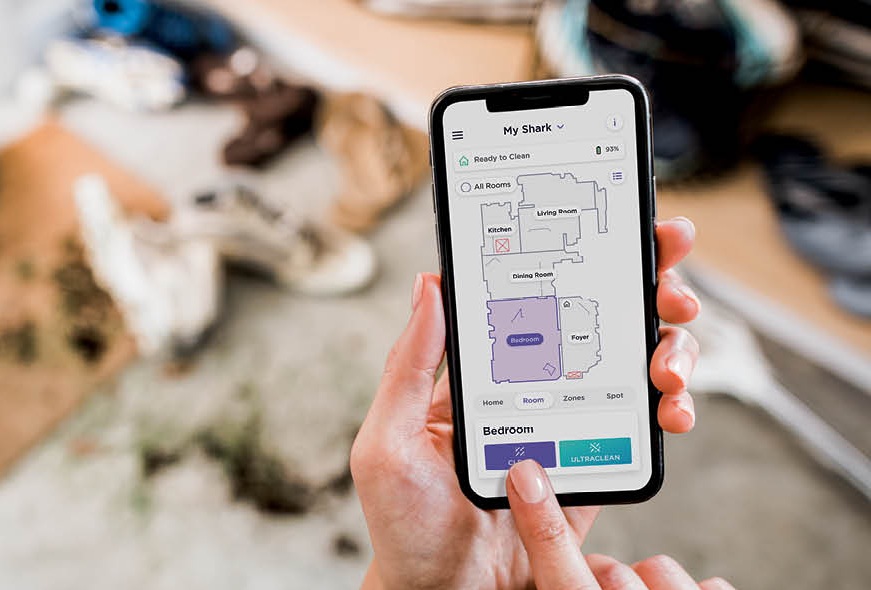
Voice Assistant Compatibility
Integration with Amazon Alexa and Google Assistant adds convenient voice control. Simple commands start cleaning without opening apps or pressing buttons.
“Alexa, tell the vacuum to clean the living room” initiates targeted cleaning. “Hey Google, send the vacuum home” It returns to the dock. These voice shortcuts streamline operation.
Large-home owners appreciate voice commands for spontaneous cleaning. Guests arriving in 30 minutes? Voice command a quick living room cleanup.
Remote Monitoring While Away
App connectivity enables remote monitoring and control from anywhere. Check cleaning progress from your office or start a session from vacation.
Real-time maps show exactly where the robot is cleaning. Some models include cameras, allowing you to check on pets or verify the house while away.
Error notifications alert you to problems immediately. “Vacuum stuck under couch” messages let you address issues remotely or return home to help.
Resources from TechRadar highlight that smart home integration significantly increases robot vacuum utilisation rates among owners.
5. Dealing with Large-Home Obstacles
Threshold Climbing Ability
Large homes typically feature varied flooring with transitions between rooms. Door thresholds and carpet edges create obstacles that challenge robot vacuums.
Quality models climb thresholds up to 0.8 inches (20mm). This capability allows seamless room-to-room navigation. Lesser vacuums get stuck at these transitions repeatedly.
Test reviews specifically mention threshold climbing. This specification matters enormously for homes with raised doorways or thick carpets.
Carpet Transition Handling
Moving between hardwood and carpet requires automatic suction adjustment. The vacuum must increase power on carpet and reduce it on hard floors.
Advanced sensors detect surface changes and adjust suction accordingly. This automation prevents carpet cleaning with insufficient power or hard floor cleaning with wasteful excess.
Poor transition handling results in either inadequate carpet cleaning or dramatically reduced battery life. Premium models master these transitions seamlessly.
Furniture Navigation
Large homes contain more furniture, creating complex obstacle courses. The robot vacuum must navigate without constant collisions or getting stuck.
Multiple sensors detect furniture legs, walls, and drop-offs. Advanced models slow down as they approach obstacles, gently touching rather than ramming.
Low-profile designs slip under most furniture. This matters tremendously in large homes where manually cleaning under beds and sofas becomes exhausting.
Cord and Cable Management
Larger spaces mean more electronics and potential tangles. Charging cables, lamp cords, and entertainment system wiring create traps for unwary robot vacuums.
Anti-tangle technology helps prevent cord wrapping. Some models detect cords and route around them. Others use specially designed brush rolls that resist tangling.
Honestly, no robot vacuum handles loose cords perfectly. Brief cable management before running the vacuum prevents frustrating tangles and stuck robots.
Read Our In-Depth Reviews of Specific Models in Our Complete Guide to the Best Robot Vacuums
6. Self-Emptying Stations: Worth It?
How Auto-Empty Bases Work
Self-emptying base stations automatically empty the robot’s dustbin after each cleaning. The vacuum docks and suction transfers debris to a larger bag in the base.
This automation reduces maintenance dramatically. Instead of emptying a small dustbin daily, you replace a large bag monthly or bi-monthly.
The process takes 10-15 seconds and creates noticeable noise. Most models allow scheduled emptying times to avoid disruption during quiet hours.

Cost vs Convenience for Large Homes
Self-emptying bases add $200-$400 to robot vacuum costs. For large-home owners, this investment often proves worthwhile despite the premium.
Large homes generate more debris. Without auto-empty capability, you might empty the dustbin multiple times per cleaning session. This defeats the automation purpose entirely.
Calculate the value of your time. If manual emptying interrupts your schedule frequently, auto-empty bases justify their cost through pure convenience.
Dustbin Capacity in Base Stations
Base station capacity determines replacement frequency. Look for models holding at least 2.5 litres – approximately 30 dustbin loads.
Large homes might require a larger capacity or more frequent bag changes. Premium systems hold 3-4 litres, extending replacement intervals to 45-60 days.
Replacement bags cost $3-$5 each. Factor these ongoing expenses into total ownership costs.
Noise Considerations
Auto-empty cycles are loud—typically 70-80 decibels for 10-15 seconds. This sounds similar to a traditional vacuum but much shorter.
Schedule emptying during times when noise doesn’t matter. Many apps allow setting auto-empty to occur only after you leave for work.
Some premium models feature quieter auto-empty technology. These reduce noise to 60-65 decibels—still noticeable but less jarring.
Testing by RTINGS shows that auto-empty noise varies significantly between brands, making comparison shopping important.
7. Maintenance for Large-Home Use
Brush and Filter Replacement Frequency
Large homes accelerate wear on consumable parts. Brushes and filters require more frequent replacement than manufacturers’ guidelines suggest.
Main brush rolls typically last 6-12 months with normal use. Heavy large-home use might necessitate replacement every 4-6 months. Watch for reduced cleaning effectiveness signalling worn brushes.
HEPA filters need replacement every 2-4 months, depending on debris levels. Some models feature washable filters extending replacement intervals but requiring regular cleaning.
Sensor Cleaning Importance
Navigation sensors accumulate dust that degrades performance. Regular cleaning maintains accurate mapping and obstacle detection.
Wipe cliff sensors, charging contacts, and LiDAR towers weekly. Use soft, dry cloths to avoid scratching delicate components.
Neglected sensors cause navigation errors. The robot might miss areas, get stuck frequently, or fail to dock properly.
Software Updates
Manufacturers regularly release firmware updates, improving performance and adding features. Enable automatic updates to maintain optimal operation.
Updates might enhance battery management, improve navigation algorithms, or fix bugs. Staying current ensures you benefit from ongoing improvements.
Check your app periodically for available updates. Some require manual installation despite automatic update settings.
Expected Lifespan Under Heavy Use
Quality robot vacuums last 3-5 years with proper maintenance. Large-home daily use might reduce this to 2-4 years.
Battery degradation determines lifespan more than mechanical wear. Lithium-ion batteries lose capacity over hundreds of charge cycles.
Budget for eventual replacement. Premium models justify higher costs through extended warranties and better long-term reliability.
According to Which? Consumer testing, premium robot vacuum brands demonstrate significantly better long-term reliability than budget alternatives.
8. Budget Considerations
Entry-Level Options ($200-$400)
Entry-level robot vacuums work adequately for small homes but struggle with large spaces. Limited battery life and basic navigation create significant compromises.
These models typically offer 90-120 minutes of runtime and random or basic navigation. They might eventually clean your large home but inefficiently.
Consider entry-level options only if budget constraints are absolute. Accept that you’ll manually manage multi-room cleaning and recharge cycles.
Mid-Range Performers ($400-$700)
Mid-range models represent the minimum viable investment for large homes. They include smart mapping, adequate battery life, and recharge-resume functionality.
Expect 150-180 minutes of runtime, LiDAR or camera navigation, and app control. These features enable effective large-home cleaning without constant intervention.
This price range offers the best value for most large-home owners. You gain essential capabilities without premium pricing.
Premium Choices ($700+)
Premium robot vacuums provide the ultimate large-home cleaning experience. Superior navigation, extended runtime, and self-emptying bases justify higher costs.
These models include advanced features like AI obstacle recognition, superior suction power, and premium build quality. They clean faster and require less maintenance.
If the budget allows, premium models deliver noticeably better results. The improved efficiency and reduced hassle justify the investment for many large-home owners.
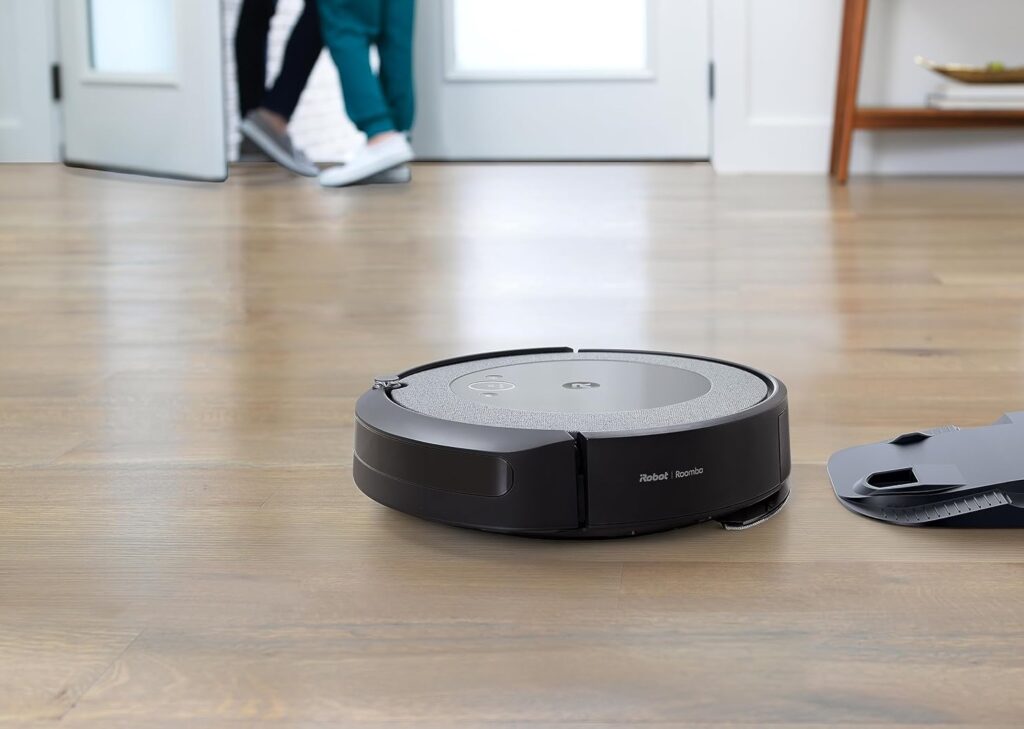
Total Cost of Ownership
Purchase price represents only part of the true costs. Calculate ongoing expenses for a complete financial picture.
Replacement brushes, filters, and self-empty bags cost $100-200 annually. Premium models might require expensive battery replacements after 2-3 years.
Factor in electricity costs, though these remain minimal. Robot vacuums consume far less power than traditional vacuums due to smaller motors.
9. Top Features You Can Skip
Mopping Function Reality Check
Combination vacuum-mop robots sound appealing but rarely deliver satisfactory mopping. The feature adds cost without proportional value for most users.
Robot mops drag damp cloths across floors. This removes light dust but doesn’t actually mop. Sticky spills and dried messes remain untouched.
Large-home owners particularly find robot mopping inadequate. The small water tanks require frequent refilling, negating automation benefits.
UV Sterilisation Necessity
Some robots include UV lights, claiming to sterilise floors. This feature provides minimal practical benefit while adding cost and complexity.
UV sterilisation requires extended contact time for effectiveness. Robot vacuums move too quickly for meaningful sterilisation.
Regular vacuuming removes the vast majority of germs through mechanical action. UV lights add little additional protection.
Unnecessary Smart Features
Manufacturers add novelty features to differentiate products. Many provide minimal practical value despite marketing emphasis.
Video streaming from the robot seems useful, but rarely gets used. Most people don’t want vacuum-eye-view footage of their homes.
Excessive app customisation creates complexity without benefit. Simple cleaning schedules and room selection suffice for most users.
Focus on fundamentals: navigation, battery life, and suction power. These core capabilities matter infinitely more than gimmicky additions.
Read Our In-Depth Reviews of Specific Models in Our Complete Guide to the Best Robot Vacuums
10. Our Top Robot Vacuum Recommendations for Large Homes
After analysing dozens of models, several robot vacuums consistently excel in large-home scenarios. These recommendations balance capability, reliability, and value.
Premium Pick: Advanced Features Worth the Investment
Top-tier models from leading manufacturers deliver exceptional large-home performance. They include comprehensive feature sets handling the most challenging spaces effortlessly.
Look for models with 200+ minute runtime, LiDAR navigation, multi-floor mapping, and self-emptying bases. These capabilities transform robot vacuums from helpful gadgets to legitimate cleaning solutions.
Premium options work best for homes exceeding 3,000 square feet or multiple levels requiring minimal user intervention.
Best Value: Mid-Range Excellence
Mid-range performers offer remarkable capability at accessible prices. They include essential large-home features without premium costs.
Expect a solid 150-180 minute runtime, reliable smart mapping, and recharge-resume functionality. These core features enable effective cleaning in most large homes.
This category suits budget-conscious buyers with 2,000-3,000 square foot homes willing to accept minor compromises.
Budget Option: Adequate with Limitations
Entry-level models can work in large homes if you accept significant limitations. Manual management and extended cleaning times become necessary trade-offs.
These vacuums suit buyers prioritising initial savings over convenience. Expect to manually move the robot between floors and restart cleaning after recharges.
For comprehensive recommendations with specific model comparisons, check out our complete guide to the best robot vacuums for large homes. That detailed review covers top performers across all price ranges.
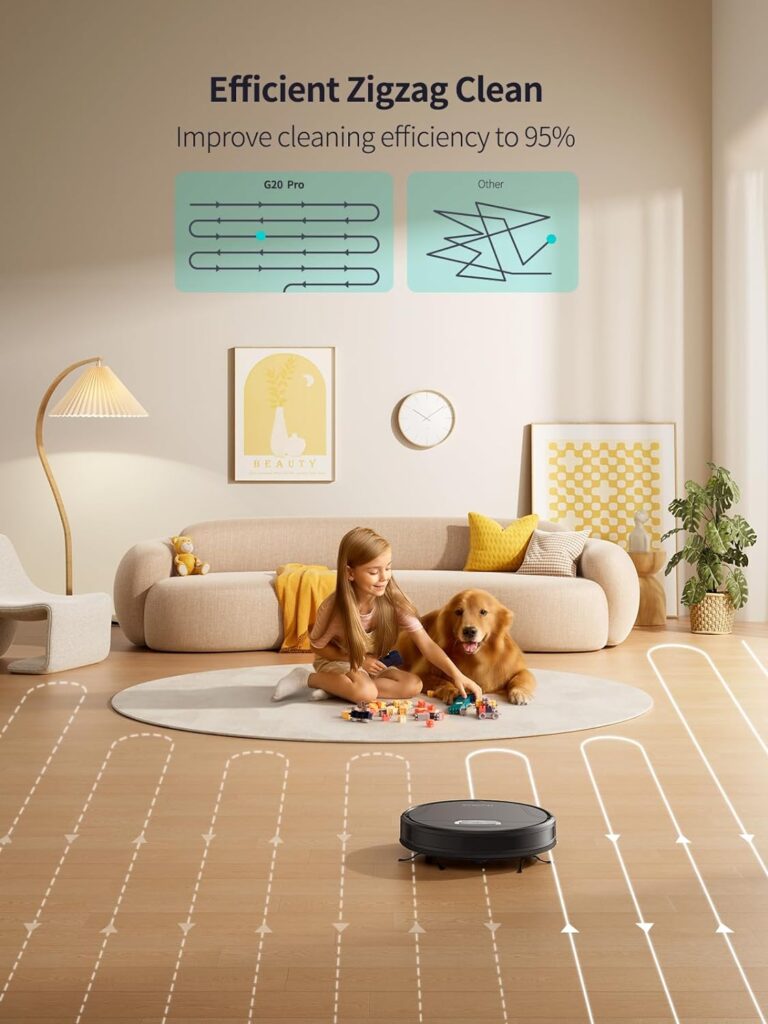
Conclusion On How To Choose a Robot Vacuum For Large Homes
Key Decision Factors Recap
Choosing the right robot vacuum for large homes requires balancing multiple factors. Let me summarise the most critical considerations.
Battery life matters more than any single feature. A minimum 150-minute runtime becomes essential for homes exceeding 2,000 square feet. Recharge-and-resume functionality extends this capability indefinitely.
Navigation technology determines cleaning efficiency. LiDAR-based systematic cleaning outperforms random-pattern navigation dramatically. This efficiency difference compounds in large spaces.
Smart mapping and room recognition enable targeted cleaning. Multi-floor memory maintains convenience across your entire home. These features transform occasional tools into daily helpers.
Measure Your Home
Calculate your actual square footage, including all areas you want cleaned. Add 20% for furniture obstacles and navigation complexity.
Count your floors and consider whether you’ll move the robot between levels. Multi-floor mapping becomes essential if you want automated cleaning throughout your home.
Identify obstacles like high thresholds or thick carpets. Verify your chosen model handles these challenges before purchasing.
Start with Core Features
Prioritise essential capabilities over novelty features. Focus your budget on battery life, navigation technology, and build quality.
Self-emptying bases provide tremendous convenience for large-home owners. If the budget allows, this feature alone justifies premium pricing.
Skip gimmicky additions like UV sterilisation or excessive app features. These rarely provide proportional value.
Test Your Wi-Fi Coverage
Ensure reliable Wi-Fi reaches all areas where the robot will clean. Dead zones prevent full smart feature functionality.
Consider mesh Wi-Fi systems if your current coverage proves inadequate. Whole-home connectivity benefits extend beyond just robot vacuum operation.
Plan for Maintenance
Budget ongoing costs for replacement brushes, filters, and self-empty bags. These consumables add $100-200 annually for active large-home use.
Establish weekly sensor cleaning routines. This simple maintenance prevents navigation degradation and extends operational lifespan.
Enable automatic software updates to maintain optimal performance. Manufacturers regularly improve robot vacuum capabilities through firmware.
Read Real User Reviews
Supplement manufacturer specifications with real-world user experiences. Focus on reviews from owners with similar home sizes.
Pay attention to long-term reliability reports. Initial performance often differs from sustained operation after months of use.
The Reviewed appliance testing site provides comprehensive long-term testing results worth consulting before purchase.
Consider Future Needs
Robot vacuum technology advances rapidly. Purchasing mid-range or premium models provides better long-term value through superior feature sets.
Today’s premium features often become tomorrow’s standard capabilities. Investing in current high-end models extends their useful lifespan.
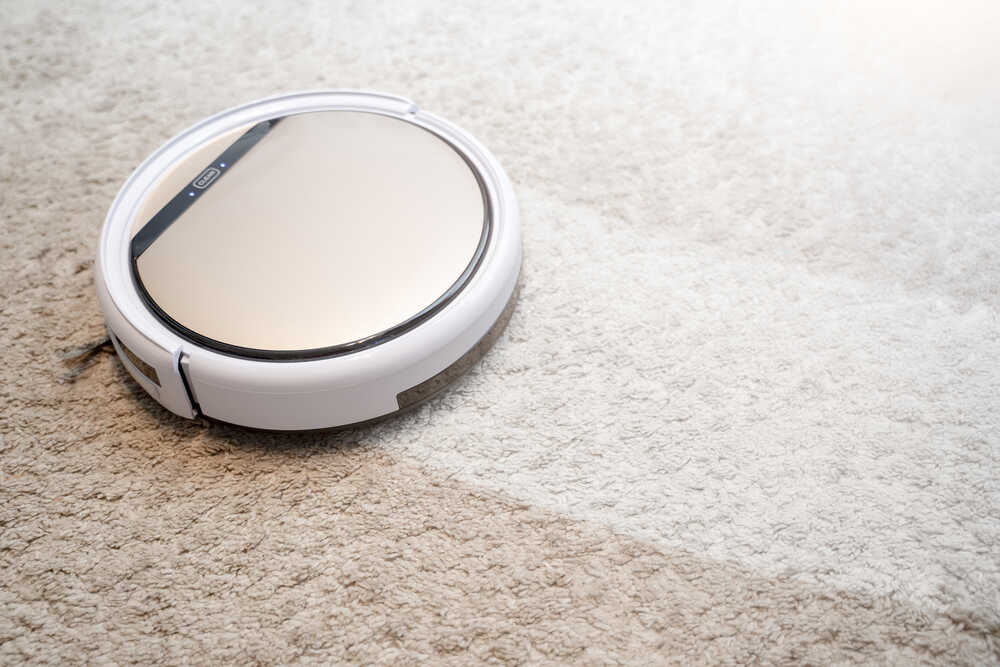
Take Action
Armed with this knowledge about how to choose a robot vacuum for large homes, you’re ready to make an informed decision. Your specific needs and budget will guide you to the right model.
Remember that no robot vacuum cleans perfectly without occasional help. Brief preparation—picking up cords and small objects—dramatically improves results.
Start by reviewing our comprehensive best robot vacuum list featuring detailed comparisons of top models for large homes.
Your large home deserves a robot vacuum capable of handling its unique challenges. The right choice transforms floor cleaning from a time-consuming chore to automated convenience.


